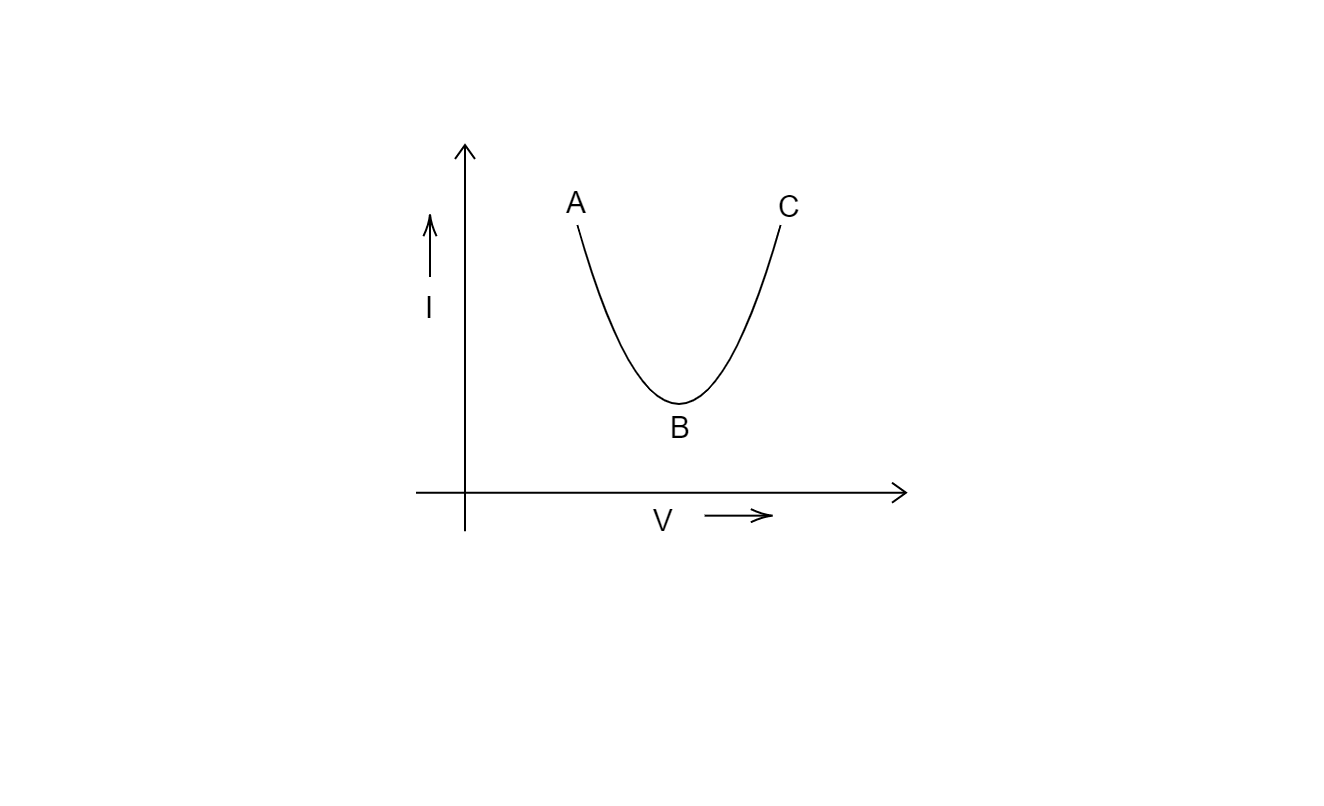Question
Question: The current-voltage graph for a device is shown in figure. The resistance is negative in region: ...
The current-voltage graph for a device is shown in figure. The resistance is negative in region:

(a) AB
(b) BC
(c) ABC
(d) None of these
Solution
Resistance is given as R=IV. Here the slope gives us the value m=ΔVΔI=V2−V1I2−I1which is nothing but m=R1. Therefore, try to figure for which part the slope will be negative.
Complete step by step answer:
From Ohm’s Law we have,
V=IR ⇒R=IV
And the graph is I vs V so the slope will be,
m=ΔVΔI=V2−V1I2−I1
On further simplification,
R=m1
Now from the graph we see that for part AB the slope is negative, for point B slope is zero and for part BC the slope is positive. Therefore, the part for which the resistance is negative is AB.
The correct answer is option A.
Note: Be careful in evaluating the slope. Read the axes carefully whether V is on x-axis or y-axis. Many times students evaluate slope m=R=V/I in a hurry. Well the answer remains the same and correct in case of multiple choice. But in case of subjective questions, marks will be deducted.
